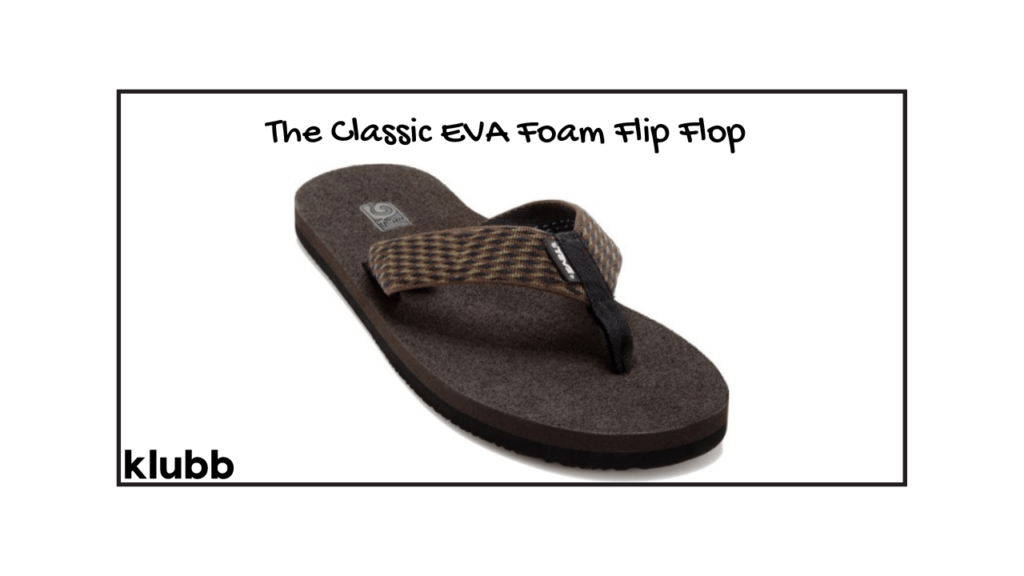Everything You Need to Know About Flip Flops

Flip flops are a type of footwear that have been around for centuries. They are known for their simple design, with a Y-shaped strap that goes between the first and second toe, connecting to the sole at either side. These shoes are perfect for warm weather and can be seen on people of all ages.
Flip flops can be traced back to ancient Egypt, where they were made from papyrus and palm leaves. They were worn by both men and women of all social classes as a way to protect their feet from the hot sand. In Japan, flip flops called “zori” were made from rice straw and first appeared in the 16th century. They were worn with traditional Japanese clothing and were often seen as a symbol of status.
In the 1950s, flip flops became popular in the United States when soldiers returning from World War II brought them back from Japan. They were marketed as comfortable and affordable beachwear, making them a staple for summer fashion. Today, flip flops are worn all over the world and have become a popular choice for casual footwear.
Traditional flip flops were made from natural materials such as rubber, straw, and palm leaves. However, modern flip flops are now made from a variety of materials including synthetic rubber, foam, plastic, and even leather. The production process usually involves pouring the chosen material into a mold and then trimming and finishing the edges for a comfortable fit.
Flip flops come in various styles, with some being more suited for certain activities than others. Traditional flip flops are perfect for beach and pool days, while wedge flip flops provide a bit of added height and are suitable for dressier occasions. Sport flip flops are designed for more active use and provide better support and grip, making them a popular choice for outdoor activities.



While flip flops are a convenient and fashionable choice of footwear, they may not always be the best option for your feet. Wearing flip flops for extended periods of time can cause foot pain, blisters, and even stress fractures. The lack of support and stability in flip flops can also lead to ankle and knee pain. It is important to choose flip flops with proper arch support and cushioning to avoid these issues.

Proper care is essential to prolong the life of your flip flops. To keep them clean, simply use a damp cloth to wipe away any dirt or stains. For stubborn stains, you can use a mild detergent and water solution. It is also important to avoid leaving your flip flops in direct sunlight for prolonged periods of time as this may cause them to warp or fade.
Overall, flip flops are a versatile and beloved style of footwear that have been enjoyed for centuries. With proper care and consideration of your foot health, they can be the perfect choice for any casual occasion. So next time you slip on your favorite pair of flip flops, remember the long history and cultural significance behind this simple yet iconic shoe.
When it comes to fitting flip flops, comfort and support should be your primary considerations. The footbed should be large enough to accommodate your entire foot without your heel or toes hanging over the edge. The straps should fit snugly, but not too tight to cause blisters or discomfort. Ideally, the flip flop should also have an arch support to prevent flat feet or other foot problems. Remember, a properly fitting flip flop not only enhances comfort but also reduces the risk of trips and falls.
Aside from proper fitting, there are a few additional considerations to keep in mind when wearing flip flops. It is important to choose the right material for your flip flops based on the occasion and weather conditions. For example, rubber or plastic flip flops are great for the beach or pool, while leather or suede ones may be more suitable for a casual summer day.

It is also crucial to keep your flip flops clean and dry to prevent any bacterial or fungal infections. If you are planning on doing a lot of walking in flip flops, it may be beneficial to invest in a pair with more cushioning and support for added comfort. Lastly, always check the soles of your flip flops for wear and tear, and replace them when necessary to maintain proper traction and stability.
